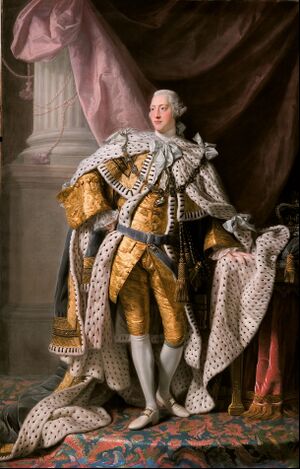King George lll
King George was England’s longest ruling monarch before Queen Victoria. He was born in 1738 and died 1820 and he ascended the British throne in 1760. George III became king of Great Britain and Ireland in 1760 after his grandfather’s, George II, death. A year after his coronation, George married to Charlotte of Mecklenburg-Strelitz, who was the daughter of a German duke. It was a political union but a fruitful one. The two people of royalty met the day of the wedding. Queen Charlotte gave birth to 15 children. In 1764 Prime Minister George Grenville introduced the Stamp Act as a way of raising revenue in the American colonies. The act was opposed in America, especially by the those whose paper would be taxed. Parliament rejected the act two years later. The American Revolution began on April 19, 1775, with the Battles of Lexington and Concord. The next year, the Declaration of Independence laid out the Americans’ case for freedom, portraying George III as an inflexible tyrant who had squandered his right to govern the colonies. In reality the situation was more complex. The parliament ministers, not the crown, were responsible for colonial policies, though George still had means of direct and indirect influence. The king was reluctant to come to terms with his army’s defeat in the Battle of Yorktown in 1781. The 1783 Treaty of Paris recognized the United States and ceded Florida to Spain. In 1778 George slowly turned insane that last months. King George III died blind, deaf and insane on January 29, 1820. His illnesses may have been caused by porphyria, an inherited metabolic disorder, though a 2005 analysis of hair samples suggested arsenic poisoning.
